#atomic science
Note
After watching Nolan's Oppenheimer, it strikes me that the Manhattan Project and the scientists involved were the original archetypes for a lot of Marvel science heroes and so on. Like Oppenheimer himself seems a model for Robert Bruce Banner, whose culpability in the gamma test led to him becoming a monster much like Mr. Death Destroyer of Worlds (which prefigures Galactus Destroyer of Worlds). Richard Feynman suggests Reed Richards, and so on. You think that's likely?
Broadly speaking, I think you're right. Heroic scientists of the 1940s-60s were very much the model for Marvel science heroes, writ large.

And yeah, I think Bruce Banner could be seen as quite similar to Oppenheimer, a tragic figure who realizes only too late the consequences of atomic science, and who ends up an outcast figure hunted by a paranoid U.S national security state.

However, I would argue that Reed Richards is an all-American replacement for Wernher von Braun, a pioneering space race scientist. (Although I could also see a case for there being a bit of Bobby Fischer in there too.) Although his pipe probably is an homage to Oppenheimer.
35 notes
·
View notes
Text
This is what one atom looks like. (Banana for scale)

#science#cool#cool science#thanks science side of tumblr#science side of tumblr#amazing#atom#atomic science#quantum#banana#fruit
98 notes
·
View notes
Text
Sylvanian Families Demon Core Accessory Set?

103 notes
·
View notes
Text

TRANSCRIPT - FROM 31:39
Tim: I found out that atoms don't look anything like every atom I've ever seen drawn looks like.
(Bryn: No, that's complete lies)
Tim: They're all lies!
Bryn: Yep.
Tim: Because all of the electrons are basically everywhere in a big cloud of potentialness—
(Bryn: Yes, absolutely.)
Tim: —and so it wouldn't look anything like every atom I've ever been shown! EXPLAIN!
Bryn: Atoms are drawn like solar systems because... apparently people who draw diagrams of atoms believe children are stupid.
Tim: I would have preferred a cloud of— look, here is a globe, the atom is everywhere and nowhere all at the same time— again, if you'd have told me that, and that dude's crazy-ass name, I'd have been much more interested in science!
Bryn: (Cracking up)
Ben: To be fair though, it would make it much more difficult to count the electrons when you were doing one of those puzzles about like, 'we knock the electron out and what isotope does it become' so you have to count the electrons and work it out.
Tim: Just dissolve it into a cloud and go, 'best of luck!'
Ben: Yeah exactly, exactly you just flick one out of the cloud and like (PFBBBT) 'Have a guess. :)'
Bryn: This is actually an important point about science— is, y'know we talked about science being a method of understanding truth, or not, as the case may be.
Tim: It's an onion of lies!
Bryn: —and a lot of science is lies, because what science really is, is a model of the universe; of reality. It's not— you know, it is not necessarily a perfect understanding, and especially when quantum physics was being developed, where we discovered stuff like: an electron is actually a cloud of possibilities, we discovered that the universe is much weirder and harder to understand than we could possibly have imagined before,
Tim: So we stopped trying.
Ben: (Pffffft)
Bryn: Basically, yes. What we have to accept is that our understanding of the universe is what we call a 'model' and the model is only useful as long as it makes predictions. But the model can also be useful, even when it doesn't necessarily reflect reality. And so chemists, to understand chemical reactions, and to understand things like isotopes or chemical bonding between elements— their model of the atom doesn't need to care about the fact that electrons aren't little balls of stuff orbiting around the center of the atom.
(Tim: Okay. Alright.)
Bryn: Their model allows them to make accurate predictions of the real world based on something that is not technically true, but— We've talked about the scientific method— hypothesis, test conclusion. If their hypothesis is a model that, in certain circumstances, we can say, 'an atom works like this,' and it makes correct conclusions, then it doesn't matter that the real picture is more complicated.
And we do this all the time in physics as well. So you've probably both studied— y'know back in school— stuff like the laws of motion, and you probably had to calculate cars moving around, or billiard balls, or things on slopes.
Tim: I was asked to, I can't claim that I ever did— but I was certainly asked to..
Ben: Probably, and at some point I was asked about Boyle's law, and shown a spring, and I was like 'ah, (unintelligible), I dunno.'
Bryn: (Cracking up) Sure. In all these examples, we ignore air resistance. Unless you're studying— y'know, and depending on what age you're studying these things, you may or may not ignore friction. But we know these things from our everyday experience exist, and we know that if we wanted to get super accurate results, we'd have to include air resistance and friction, but actually the results that we get by ignoring them are close enough that if we don't need to be 100% accurate, if we're just trying to make a decent prediction, the prediction is good enough most of the time.
Tim: It's spherical chickens again. ((I think this is a reference to the previous Tim & Ben do Science episode))
Bryn: It's spherical chickens in a vacuum, absolutely. And it's an important joke in a way, because what it says is, 'well, reality is complex and messy as we've already established, and science helps us understand it, but if science is making accurate predictions, that's really what's important.' And accurate predictions are essentially specific to a certain field or a certain test.
If I say, 'well if I chuck this acid and this alkalide into a cup together, I don't need to know what's going to happen with every single atom inside. What I need to know is what's gonna end up in the cup at the end.
Tim: There's potentially a lovely analogy, I think, from cartography where they say 'the only true map is the exact size and shape of the thing you are trying to map.'
(Bryn: Absolutely.)
Tim: '—but best of luck taking that on a short camper-vanning holiday in the Cotswolds.'
END TRANSCRIPT - AT 35:45
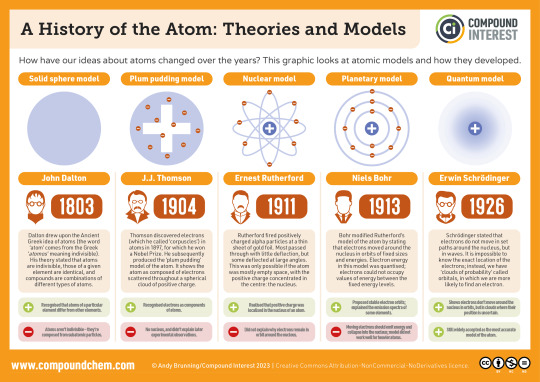
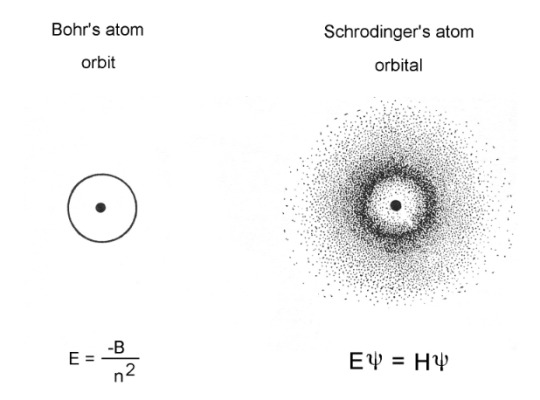
And you're telling me we're supposed to be more engaged, as high school students, with a model by some guy named Bohr than the QUANTUM CAT BOX guy??
#I couldn't find an existing transcript of this episode so I just spend the past hour or so typing that up myself lol#it's okay I want to have it exist In Text Form#Stellar Firma#Tim Meredith#Ben Meredith#Bryn Monroe#atoms#science#Schrodinger#schrödinger#Erwin Schrodinger#Erwin Schrödinger#atomic science#electrons#sub-atomic particles#infographic#educational#comedy podcast#podcast#podcast transcript#partial transcript#transcript#Chris Fleming#was anyone going to tell me#long post
12 notes
·
View notes
Text
look, I know I've talked about this essay (?) before but like,
If you ever needed a good demonstration of the quote "Any sufficiently advanced technology is indistinguishable from magic", have I got an exercise for you.
Somebody made a small article explaining the basics of atomic theory but it's written in Anglish. Anglish is basically a made-up version of English where they remove any elements (words, prefixes, etc) that were originally borrowed from romance languages like french and latin, as well as greek and other foreign loanwords, keeping only those of germanic origin.
What happens is an english which is for the most part intelligible, but since a lot everyday english, and especially the scientific vocabulary, has has heavy latin and greek influence, they have to make up new words from the existing germanic-english vocabulary. For me it kind of reads super viking-ey.
Anyway when you read this article on atomic theory, in Anglish called Uncleftish Beholding, you get this text which kind of reads like a fantasy novel. Like in my mind it feels like it recontextualizes advanced scientific concepts to explain it to a viking audience from ancient times.
Even though you're familiar with the scientific ideas, because it bypasses the normal language we use for these concepts, you get a chance to examine these ideas as if you were a visitor from another civilization - and guess what, it does feel like it's about magic. It has a mythical quality to it, like it feels like a book about magic written during viking times. For me this has the same vibe as reading deep magic lore from a Robert Jordan book.
#off topic#literature#language#linguistics#science#science history#science fiction#fantasy#physics#atomic theory#anglish#chemistry#robert jordan#the wheel of time#uncleftish beholding
43K notes
·
View notes
Text
On 7 August at 9 a.m. an officer of the Japanese Army Air Force called at the laboratory of Yoshio Nishina, the best known of the Japanese atomic scientists, which had suffered severe damage in a previous air raid.
"Brighter than a Thousand Suns: A Personal History of the Atomic Scientists" - Robert Jungk, translated by James Cleugh
#book quotes#brighter than a thousand suns#robert jungk#james cleugh#nonfiction#august 7#40s#1940s#japan#army air force#laboratory#yoshio nishina#atomic scientist#atomic science#damage#air raid
0 notes
Text
On a number of occasions the question arose among the passivist German atomic scientists whether, and, if so, how, information should be conveyed to the other side as to the condition of German research work and the real intentions of the Uranium Society.
"Brighter than a Thousand Suns: A Personal History of the Atomic Scientists" - Robert Jungk, translated by James Cleugh
#book quote#brighter than a thousand suns#robert jungk#james cleugh#nonfiction#questions#pacifist#german#atomic science#information#spread of information#research#true intentions#uranium society#secret society
0 notes
Text
LINK FEST: 4 JULY 2023
Links that may or may not be related to gardens, food, travel, nature, or heterotopias and liminal spaces but probably are. Sources in parentheses.
museum: ORAU Museum of Radiation and Radioactivity (Oak Ridge Associated Universities/Oak Ridge Institute for Science & Education). Maybe it’s because one of the family summer trips (c. 1970s) I remember most included a very educational stop at the…

View On WordPress
#atomic science#Dig Delve#dusk#evening#garden bathing#garden design#gardens#Jared Barnes#Kardashians#linkfest#links#niwa-yuko#nuclear physics#Oak Ridge#Oudolf Field#pantry#Piet Oudolf#radiation#the void
1 note
·
View note
Text

#Aliens Expanded#ost#soundtrack#art#design#color#style#Aliens#Alien#xenomorph#illustration#scifi#science fiction#Atom Cyber art#Atom Cyber
1K notes
·
View notes
Text

We have done better. We are better.
#science#religion#science vs religion#religion vs science#polio#polio vaccine#moon landing#Apollo 11#moon#atomic energy#religion is a mental illness
727 notes
·
View notes
Text

Shine like a guiding star, Union of science and labor! (1979)
88 notes
·
View notes
Photo

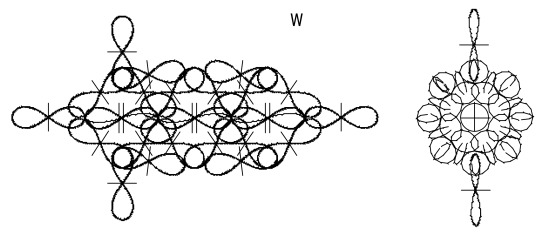

Periodic table of atomic nuclear structures (according to BSM-SG), Atlas of Atomic Nuclear Structures, Stoyan Starg
2K notes
·
View notes
Text
Jesper: You remember how you tried to bore our son to sleep the other week with nuclear and particle physics?
Wylan: Yeah?
Jesper: Well now he keeps asking for me to tell him ‘about the atoms’ at bedtime, Im out of my depth 😭
Wylan: Haha aww hes my little scientist, you best get studying
#wylan doesnt like science hence why he thought it would bore him to sleep#wesper kid said nah atoms is da bomb#soc#soc incorrect quotes#six of crows#jesper fahey#wylan van eck#wesper#wesper kid#wesper parents
163 notes
·
View notes
Text

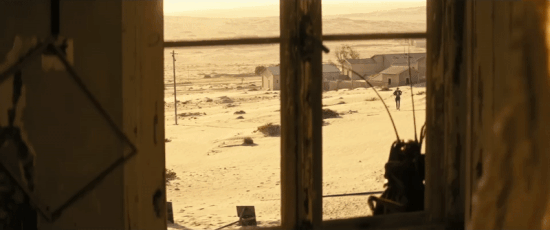







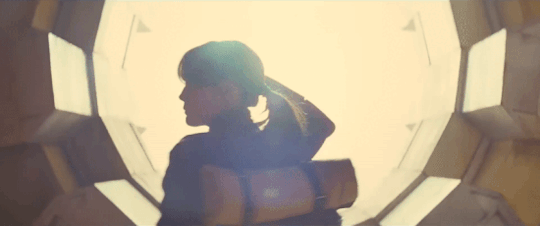
‘‘ I don't want to see tomorrow,
Unless I see it with you… ’’
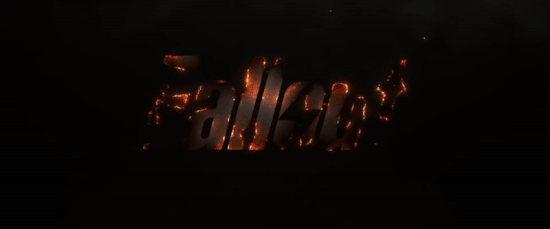
#fallout#tv series#web series#amazon studios#video games#post-apocalyptic#science fiction#dogmeat#brotherhood of steel#vertibird#mr. handy#robot#atom-punk#dystopian#sci-fi#tv shows#television#i made some GIFs#my GIFs#nat king cole#walton goggins#ella purnell
270 notes
·
View notes
Text
Instead of doing so he went on to say, evidently irritated and hoping to divert Pash's attention, that the unknown intermediary referred to had already been talking to three atomic scientists.
Pash: Yes. Here's the thing – we of course assume that the people who bring this information to you are 100 per cent with you and therefore there is no question about their intentions. However, if—
Oppenheimer: Well, I'll tell you one thing – I have known of two or three cases, and I think two of the men were with me at Los Alamos – they are men who are very closely associated with me.
Pash: Have they told you that either they thought they were contacted for that purpose or they were actually contacted for that purpose?
Oppenheimer: They time me they were contacted for that purpose.
Pash: For that purpose.
Oppenheimer: That is, let me give you the background. The background was – well, you know how difficult it is with the relations between these two allies, and there are a lot of people who don't feel very friendly to Russia, so that the information – a lot of our secret information, our radar and so on – doesn't get to them, and they are battling for their lives and they would like to have an idea of what is going on and this is just to make up, in other words, for the defects of our official communication. That is the form in which it was presented.
Pash: Oh, I see.
"Brighter than a Thousand Suns: A Personal History of the Atomic Scientists" - Robert Jungk, translated by James Cleugh
#book quotes#brighter than a thousand suns#robert jungk#james cleugh#nonfiction#conversation#recorded conversation#j robert oppenheimer#boris pash#information#questions#los alamos#russia#radar#communication#diversion#atomic science#scientists
0 notes
Text
And yet it was not only on technical grounds that the atomic scientists of the period 1935-8 so often overlooked the truth.
"Brighter than a Thousand Suns: A Personal History of the Atomic Scientists" - Robert Jungk, translated by James Cleugh
#book quote#brighter than a thousand suns#robert jungk#james cleugh#atomic science#scientists#overlooked#truth#30s#1930s#technicality
0 notes